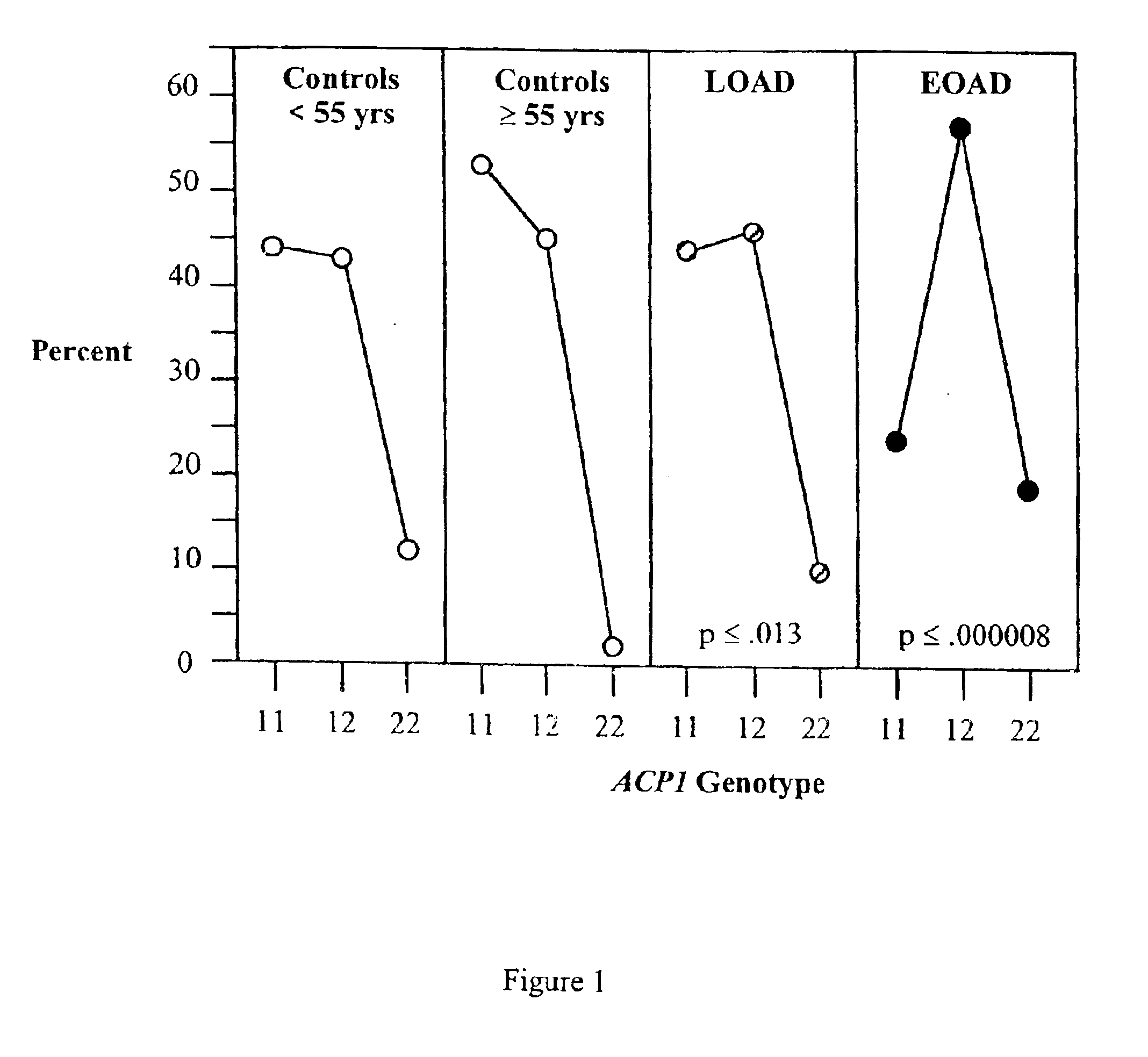Association between the acid phosphatase (ACP1) gene and Alzheimer's disease
a technology of acid phosphatase and gene, applied in the field of association between the acid phosphatase (acp1) gene and alzheimer's disease, can solve the problems of lack of evidence for a specific defective kinase or phosphatase, increased risk of alzheimer's disease, and small oxidative stress to produce alzheimer's diseas
- Summary
- Abstract
- Description
- Claims
- Application Information
AI Technical Summary
Benefits of technology
Problems solved by technology
Method used
Image
Examples
example 2
A larger sampling of LOAD patients were analyzed for occurrence of the 2 allele as in Example 1. The results of the association of ACP1 with LOAD is shown in Table 2 (number and percent of subjects with each genotype for controls and LOAD subjects, the chi square and the p value). These data include the LOAD individuals from Example 1 expanded with additional individuals diagnosed with LOAD. These results demonstrate that the association of ACP1*A with Alzheimer's disease may be limited to EOAD.
Discussion
Analysis of the ACP1 gene in older obese individuals has indicated that the ACP1*A allele is also associated with increased triglyceride levels. This suggests that the ACP1 gene is a longevity gene and that in a healthy control group the frequency of the ACP1*A allele might decrease with age, due to the earlier death of those carrying this allele. To test this the frequency of the ACP1*A allele in healthy individuals of several age groups including the <55 and .gtoreq.55 controls wa...
PUM
| Property | Measurement | Unit |
|---|---|---|
| temperatures | aaaaa | aaaaa |
| temperatures | aaaaa | aaaaa |
| temperatures | aaaaa | aaaaa |
Abstract
Description
Claims
Application Information
 Login to View More
Login to View More - R&D
- Intellectual Property
- Life Sciences
- Materials
- Tech Scout
- Unparalleled Data Quality
- Higher Quality Content
- 60% Fewer Hallucinations
Browse by: Latest US Patents, China's latest patents, Technical Efficacy Thesaurus, Application Domain, Technology Topic, Popular Technical Reports.
© 2025 PatSnap. All rights reserved.Legal|Privacy policy|Modern Slavery Act Transparency Statement|Sitemap|About US| Contact US: help@patsnap.com

